Door County
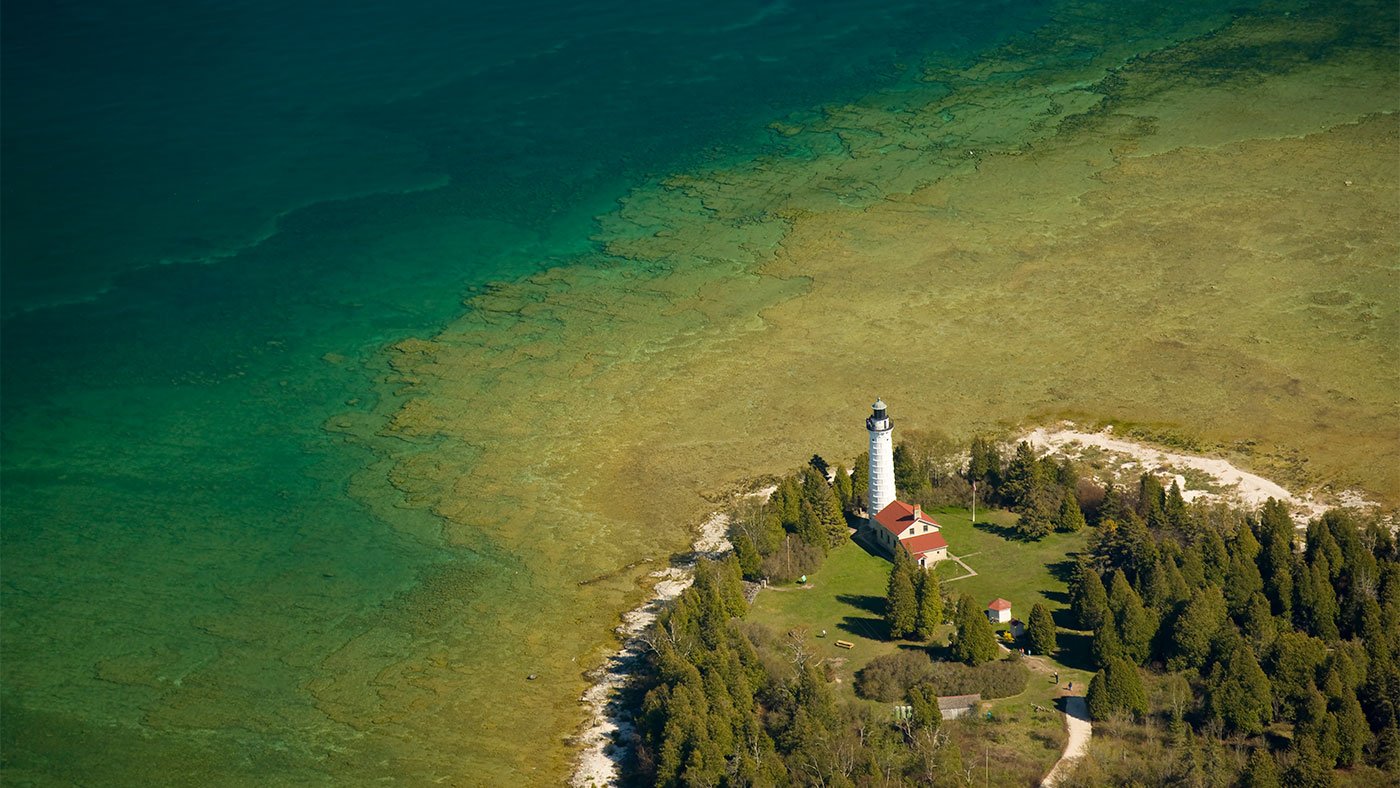

For more than a century, Chicago vacationers have flocked to Door County, Wisconsin. Its popularity exploded in the nineteenth century after a canal was cut across the Door County peninsula, creating a quicker and less hazardous route for large steamboats to reach Green Bay from Lake Michigan. An 1894 Chicago Tribune article reported that Chicago tourists at that time “overflowed the hotels and boarding houses, invaded private hospitality, and filled the farm houses in the adjacent country along the bay.”
The new visitors were immediately enchanted, wrote the author, with the region “of wild rocky heights, of deep, fragrant woods, of verdant islets, sandy beaches and stony gulfs.” And they still are – though today’s visitors also enjoy the peninsula’s charming small towns, leisurely supper clubs, wineries, and pie shops.
The Land of Water and Cherries
Sturgeon Bay, where that seven-mile canal cuts across the southern portion of Door County, is still the port of entry (though most visitors today arrive by car). And it is a great place to learn the history of the area, plan your trip, stretch your legs, and have your first taste of Door County’s signature fruit: the red cherry.
There was a time not too long ago when more red cherries were grown here than anywhere else in the world, according to the Door County Historical Museum. While the region can no longer claim that title, there are still several cherry (and apple and lavender) orchards on the peninsula, and cherries remain an integral part of regional cuisine and culture.
You can get your first taste of Door County cherries atop a pile of pancakes, in a salad, in a slice of pie – or even in a glass of sangria – at Scaturo’s Baking Company, just before you reach the water. They also have a vast array of homemade baked goods that makes it a favorite with locals. If it’s nice outside, sit on the back patio.


After lunch, head to the waterfront to stretch your legs. The completion of the canal transformed Sturgeon Bay into a strategic Great Lakes shipping corridor and shipbuilding hub, and the bay and canal are still highly trafficked by everything from lake freighters to bass-fishing boats. Walking trails line either side of the commanding Sturgeon Bay Bridge, which was the largest span in Wisconsin when it was constructed in 1931.
On the south end of bridge, the Door County Maritime Museum celebrates and documents the region’s long history of life and commerce on the water, starting with the Chippewa people who traded and traveled in their birch-bark canoes. Visitors also learn about the estimated 250 nearby shipwrecks, many of which still lie in the waters surrounding the county, and about Sturgeon Bay’s impressive contribution to the war effort during World War II as a leading manufacturer of naval vessels.
The Maritime Museum is also home to a few operable vessels of its own, usually docked outside. They include an early twentieth century tugboat and a retired City of Chicago Fireboat. Today, the latter houses a small museum dedicated to Chicago’s firefighting efforts.

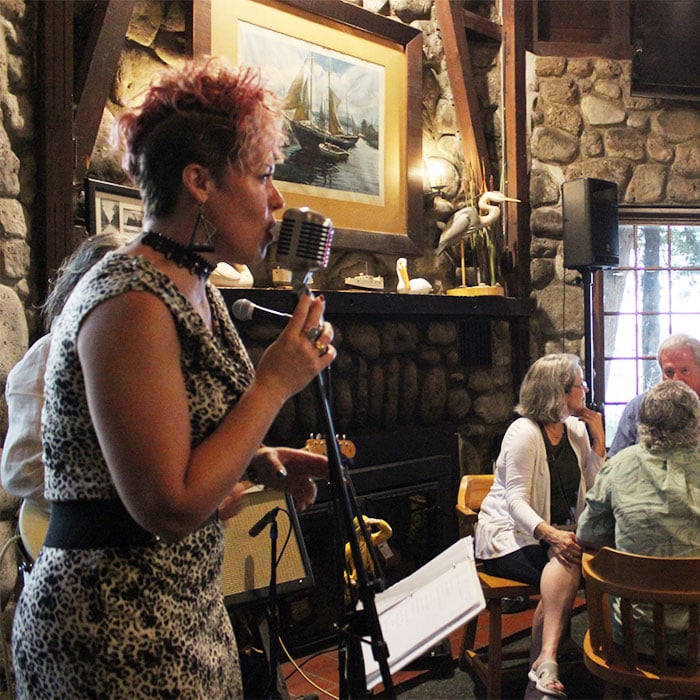
There are several bed-and-breakfasts in and near Sturgeon Bay, but one of the most affordable and unique options is The Holiday Music Motel. Its owners say they have “retrovated” it with stylish vintage décor. Continental breakfast is served in a small diner on site where patrons are invited to step behind the bar to serve themselves.
What makes The Holiday Music Motel truly special is what happens there when it shuts down. Three times a year, the owners hold invitation-only songwriting confabs. Songs are recorded in the guest rooms and later broadcast on the Steel Bridge Radio app, also managed from the motel.
After checking in, stroll down 3rd Street, Sturgeon Bay’s main street and home to a host of quaint independent shops, bars, and eateries. Or if you’re in the mood to experience a genuine Wisconsin supper club, head to Donny’s Glidden Lodge outside of town on Lake Michigan. You might catch the owners’ singer-songwriter daughter-in-law, Ruby James Zeller, singing in the bar.
A Scenic Drive to the Bay
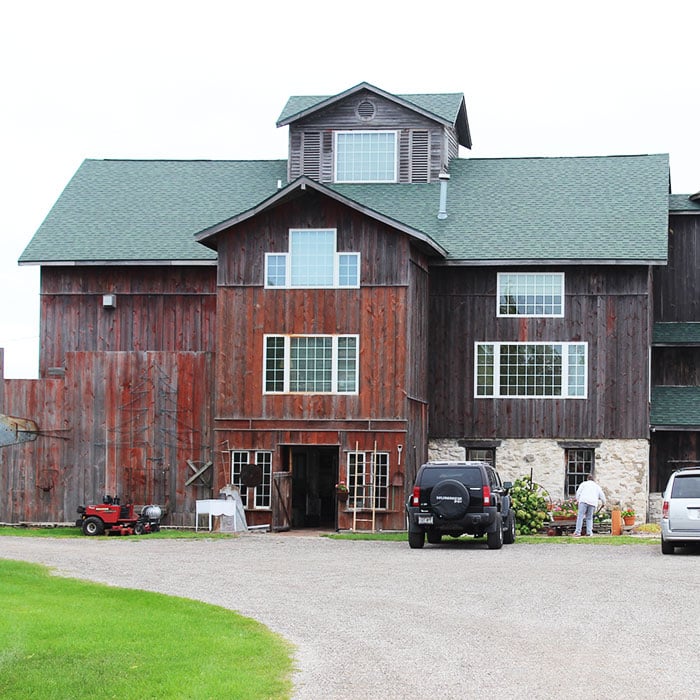
The next morning, take a leisurely, bucolic drive north to Fish Creek on the bay side. The rolling hills and open fields are dotted with tempting detours, including orchards, wineries, distilleries, and antique shops, some of them situated in old dairy barns. As with the rest of the state, the dairy industry in Door County has declined in recent decades. But unlike other rural areas, several farmers in Door County have been able to transform their property, and their outlook, by switching gears and taking advantage of the local tourism industry.
Art, Spectacle, and Ghosts in Fish Creek
Door County is also home to more than 100 galleries, studios, and arts organizations. One of the oldest collections can be found just south of Fish Creek at the Edgewood Orchard Galleries. Their sculpture garden is nestled in the surrounding woods, and their indoor gallery is overflowing with upscale paintings, sculpture, jewelry, and blown glass.
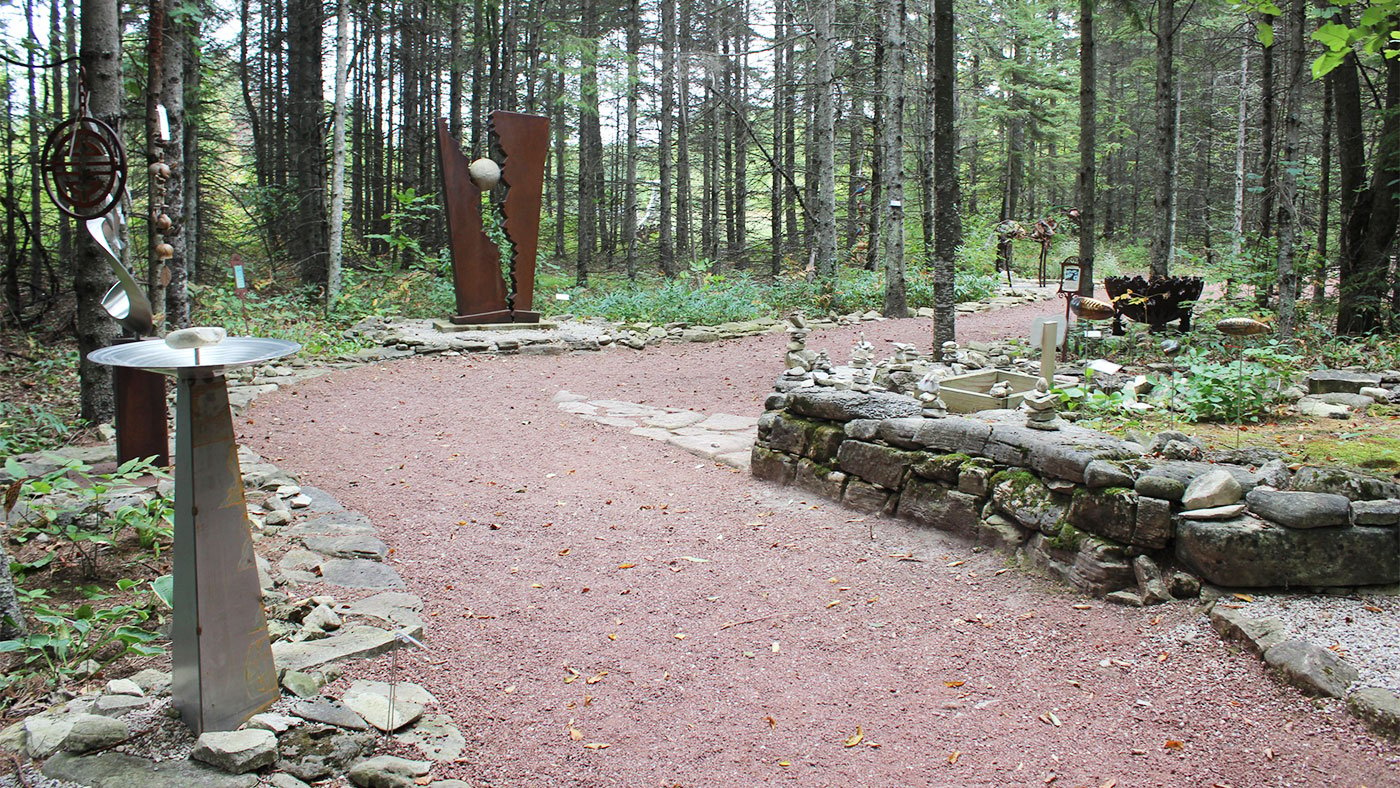
Down the street from the Edgewood Orchard Galleries is the country’s oldest professional resident summer theatre. The Peninsula Players have been performing since 1935, and nowadays those performances take place along the shores of Green Bay.
There are many places in downtown Fish Creek to witness a fish boil – a Door County spectacle that is equal parts functional, theatrical, and traditional. During a fish boil, a giant kettle of water filled with chunks of fresh whitefish, potatoes, sometimes onions, and lots of salt is placed on an open wood fire. When the fish oil floats to the top, the “boil master” throws kerosene on the fire, causing an eruption that always elicits applause from spectators. The fish boil tradition is said to stem from the early days of European settlement on the peninsula, when the logging industry dominated the region and needed a way to feed hordes of hungry lumberjacks lickety-split.
Fish Creek is also a good spot for wandering into local boutiques, restaurants, and historical sites, including the restored home of one of the town’s founding fathers, Alexander Noble. The Noble House offers visitors a window into life in Door County at the turn of the century…and is believed to be haunted!
Stop to Appreciate the Natural Beauty
Peninsula State Park, Door County’s largest state park, is just north of Fish Creek. Many of its structures, campsites, and miles of hiking and biking trails were developed between 1935 and 1937 by the Civilian Conservation Corps. Today, it is also home to an outdoor summer theater, an 18-hole golf course, and a beach with canoe, kayak, and bicycle rentals. During the winter, many of its trails are transformed into cross-country ski trails. In any season, don’t miss the majestic views along Skyline Road.
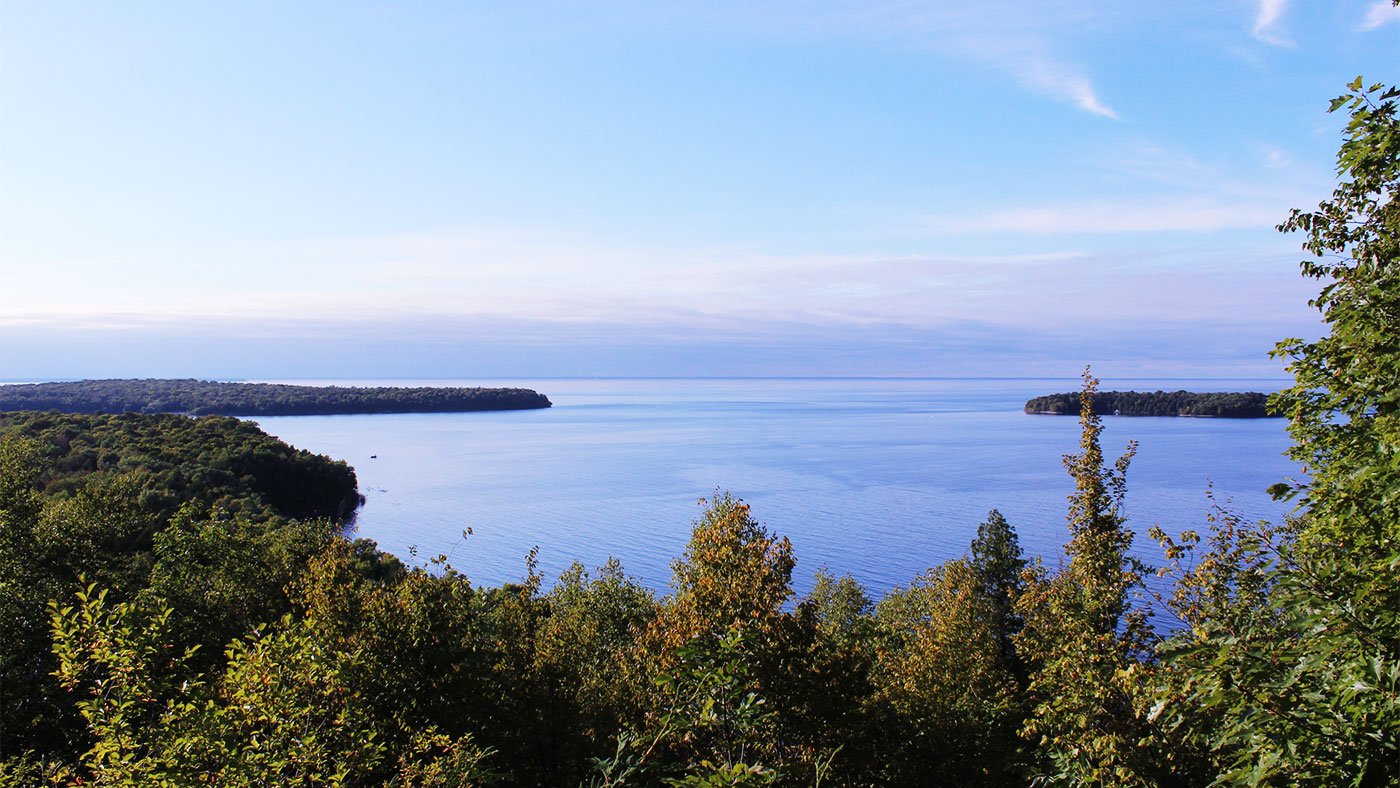
Fishing equipment can be checked out, free of charge, at the park office, and the Wisconsin Department of Natural Resources calls Weborg pier here a “hotspot” for smallmouth and rock bass. (Of course, with several inland lakes, bays, a river, and, of course, access to Lake Michigan, there are ample fishing spots throughout the county.)
Ice Cream and History in Ephraim
You’ll know you’ve entered Ephraim when every single building is suddenly either white or constructed with large, sturdy stones. The stone houses were designed by architect William Bernhard, who arrived in Ephraim from Chicago in 1926, and the white paint is a long-held tradition and current building code.
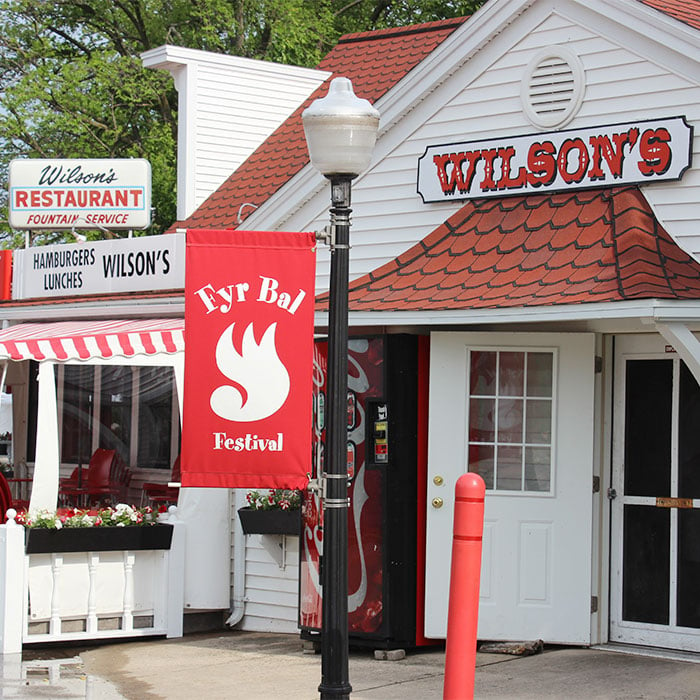
Ephraim is one of the older villages in the county, and its history has been lovingly preserved by the local community. The Ephraim Historical Foundation offers guided walking tours of historic buildings, churches, and homes. One of the sweetest stops on their tour is Wilson’s Restaurant and Ice Cream Parlor, a ’50s-style soda fountain with home-brewed draft root beer, burgers, jukeboxes, and, of course, all kinds of ice cream confections.
Regulars like to pick up a cone at Wilson’s and then walk across the street to Anderson Dock to catch the sunset. The graffiti-covered building on the dock was built by two of the town’s first settlers: Aslag and Halvor Anderson. The brothers emigrated to the U.S. from Norway in the late 1840s to work in the lumber industry and built the dock and the barn here to store lumber and other goods awaiting shipment. According to local lore, sailors would carve the date of arrival and the names of their boats onto the side of the barn upon arriving, to let their loved ones know that they were safe. Later, tourists joined in, painting their names on the building. The tradition continues to this day.
Inside the old barn, the area where lumber and other goods used to be stored is now the impressive Francis Hardy Center for the Arts.
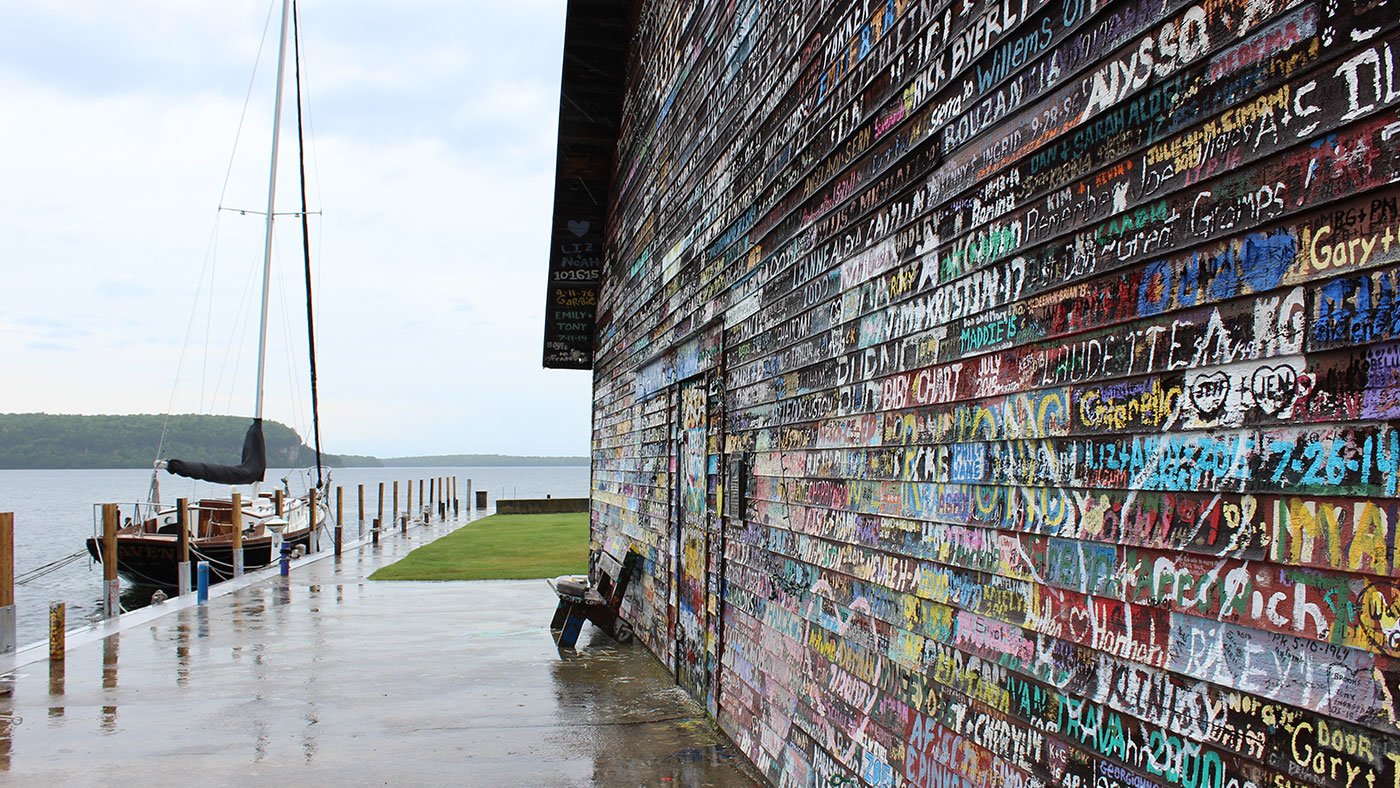
Goats, Dirndls, and Kombucha in Sister Bay
The next morning, grab breakfast nearby. Sister Bay, the village just north of Ephraim, has several options.
One of the more famous is Al Johnson’s Swedish Restaurant. Al Johnson moved to the area from Chicago and opened the now-famous restaurant here in 1949. His Swedish wife, Ingert, slowly transformed it into a Swedish theme, with traditional woodwork, dirndl-clad servers, and several Swedish dishes on the menu, including, of course, Swedish pancakes.
The goats that famously graze on the sod-covered roof? There’s no Swedish connection. That was all Al.
Al passed away in 2010, but his family has maintained the restaurant’s distinctive atmosphere and, of course, the goats.
If you’re in the mood for something lighter, nearby is a smoothie, juice, and kombucha bar. The Kitschinn Juicery is the taproom for Tapuat Brewing Co., a growing kombucha company with distribution throughout the Midwest. Their menu is 100-percent organic, gluten-free, and vegan – and they have a menu of smoothies specifically designed with the finicky child in mind.
An Island Oasis, Door County Style
After breakfast, make your way north along Route 42 to the tip of the Door County peninsula and the dangerous strait known as Death’s Door, which gave the county its name. Many shipwrecks lie here where the waters from Green Bay and Lake Michigan meet. But contrary to popular myth, that isn’t what earned this strait its ominous moniker. Instead, it was one particular incident. In the seventeenth century, a fatal encounter took place there between rival Winnebago and Potawatomi tribes. While the details of the legend vary, most accounts claim that the waters suddenly turned rough, just as a battle ensued. Approximately 300 Potawatomi died.
Today, Wisconsin Highway 42, which links Door County to the rest of Wisconsin, ends in Northport, just past Ellison Bay. But the county continues into the string of islands to the north. Washington Island, where the Potawatomi once thrived, is the largest of them.
At Northport Pier, you can board a car ferry to reach Washington Island, which also has bikes and mopeds for rent if you opt to leave your car on the mainland.
Stop at Red Cup Coffee House a little inland to grab a snack and browse through their selection of locally made jewelry, scarves, and cards. It’s also a popular, local hangout for the some-700 people who call the island home.
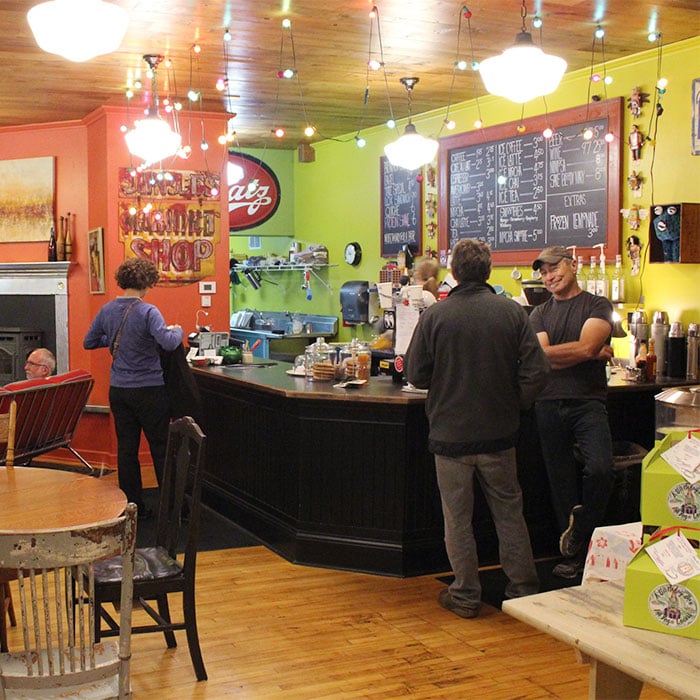
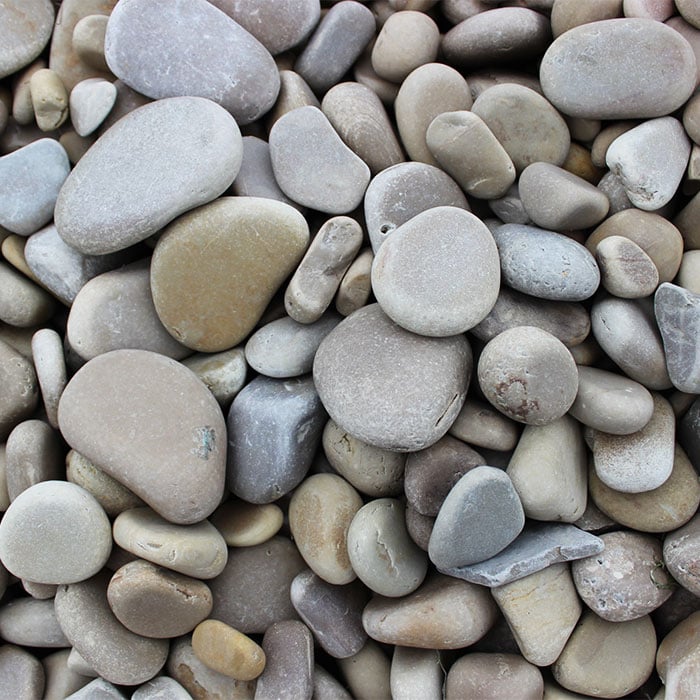
At the northern tip of the island, Schoolhouse Beach is a dream come true for people who love visiting beaches but don’t like all of that sand. Over thousands of years, waves polished the limestone rocks here, turning each into a smooth geological treasure. If you listen carefully, you can hear the sound of the rocks gently clicking against each other as the waves roll ashore. Locals lament the depletion of the rocks by visitors who pocket them as souvenirs. They’ve levied a $250 fine on anyone caught pilfering the stones.
Just west of Schoolhouse Beach is the Jacobsen Museum, which features the eclectic collection of fossils, Native American artifacts, artwork, and other curios gathered over the lifetime of one fascinating man. Jens Jacobsen arrived on Washington Island from Denmark in 1881 at the age of 14. After fifty years of exploring, documenting, and collecting, he built a small log cabin in 1931 at the age of 64 to showcase his collection. Today, it remains a museum of the time in which he lived and the island he loved.
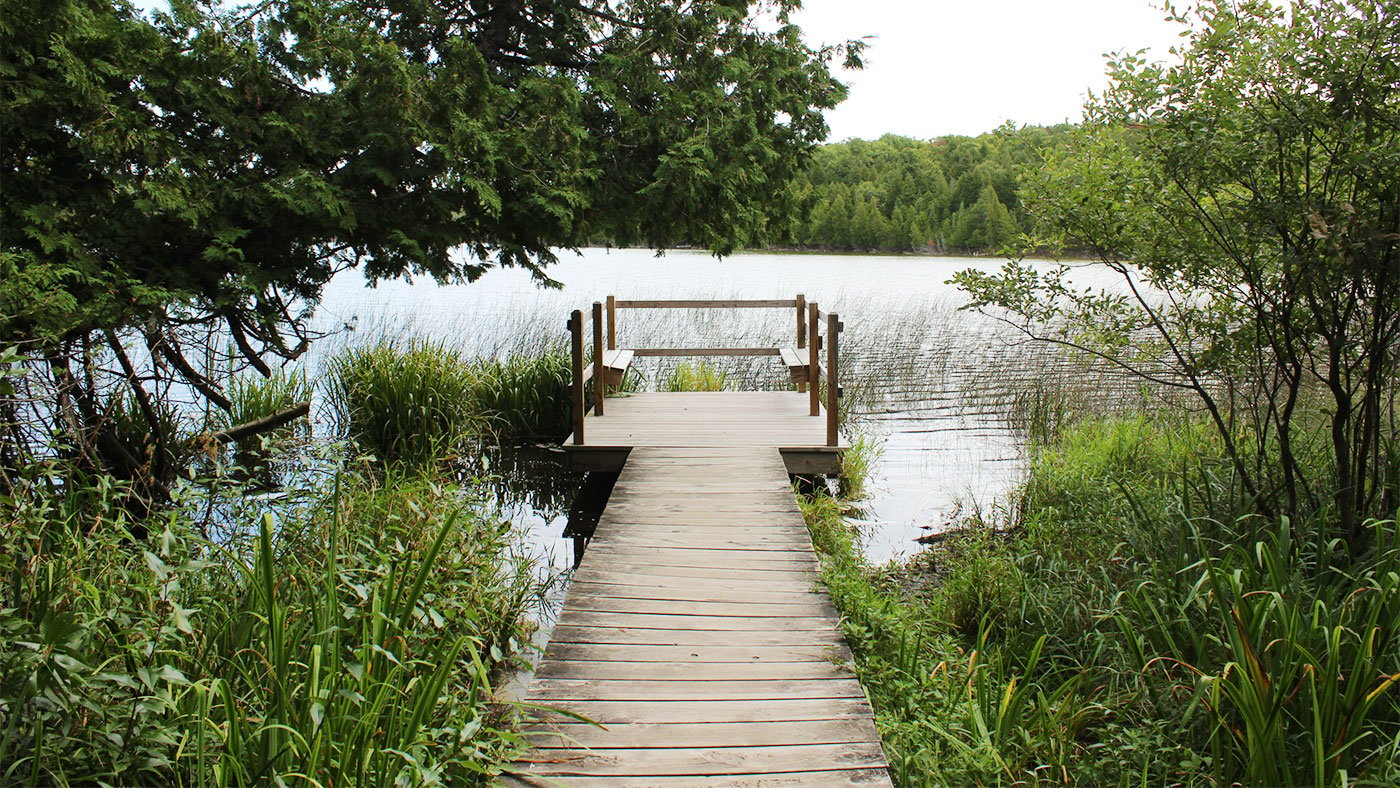
There are many other fascinating treasures on Washington Island. Visitors who scale the 186-step staircase at Mountain Park Lookout Tower are rewarded with a commanding view of the island and surrounding waters. There is a stavkirke, or stave church, modeled on an 1150 Norwegian church. It was built in 1995 by locals as a testament to the region’s Scandinavian heritage.
And if you’d like to spend more time there, the Sievers School of Fiber Arts offers educational retreats: 2- to 7-day classes on making such things as Navajo rugs, Latvian mittens, and bent-willow chairs.
Stars, Hikes, and Peace and Quiet at Newport State Park
Back in Ellison Bay on the mainland is Newport State Park, with its evergreen and hardwood forests, wetlands, and upland meadows. It is Wisconsin's only wilderness park, which means that development is limited. It has few paved roads and artificial lights are kept to a minimum. Visitors come here to camp (though sites are hike-in only), hunt, trap, hike, and stargaze. Newport State Park is one of a small number of places in the Midwest designated as an official Dark Sky Park by the International Dark-Sky Association.
Beer and Boats in Baileys Harbor
Further down the lake side of the peninsula lies Baileys Harbor, which is slightly quieter than some of the towns on the bay side. One of the newer additions to the town is the Door County Brewing Company Music Hall, a giant beer hall with a friendly, artistic feel and live music on the weekends.
Locals also recommend hiking at the Ridges Sanctuary and kayaking at nearby Moonlight Bay.
The nearby Cana Island Light Station is managed by the Door County Maritime Museum. Visitors here can climb the 102-step, cast-iron staircase to the top of the lighthouse for a spectacular view. It’s the same staircase that, for decades, the lighthouse keeper or his wife scaled every night, carrying whale oil or lard to light the lamp.
One Last Stop at Whitefish Dunes State Park
Stop at Whitefish Dunes State Park or nearby Cave Point County Park to take in the underwater caves and wave-worn limestone cliffs, stretch your legs, and breathe in a little more of that fresh Door County air before the long drive back to Chicago.

